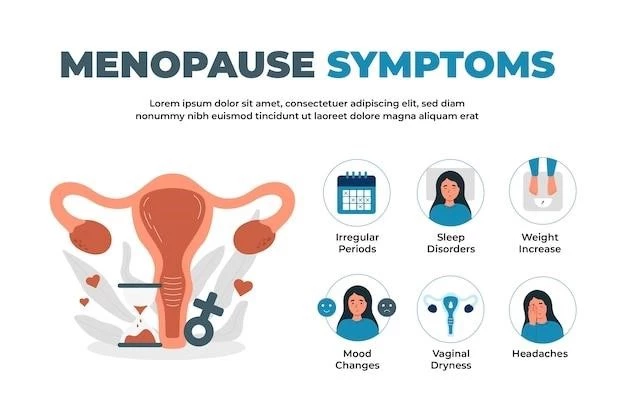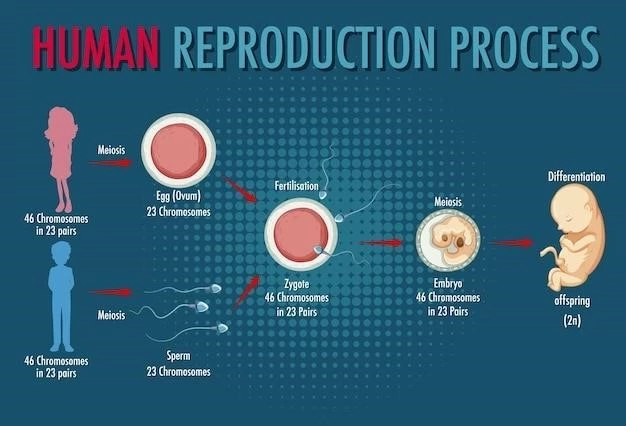Introduction to Ectodermal Dysplasia Hypohidrotic Autosomal Dominant
Ectodermal Dysplasia Hypohidrotic Autosomal Dominant is a rare genetic disorder affecting the body’s hair, teeth, skin, nails, and sweat glands; Understanding its abnormal development is crucial․
Explanation of the Genetic Disorder
Ectodermal Dysplasia Hypohidrotic Autosomal Dominant is a genetic disorder that affects various ectodermal structures including hair, teeth, skin, nails, and sweat glands․ It is characterized by abnormal development in these areas due to genetic mutations․ The syndrome is inherited in an autosomal dominant pattern, meaning that a mutation in one copy of the responsible gene is sufficient to cause the condition․ Understanding the underlying genetic mechanisms of this rare condition is essential for diagnosis, treatment, and management․ Consult with healthcare professionals and genetic counselors for comprehensive information and guidance regarding the impact of the disorder on your health and well-being․
Importance of Understanding the Condition
Understanding Ectodermal Dysplasia Hypohidrotic Autosomal Dominant is crucial for individuals and families affected by this genetic disorder․ Knowledge about the symptoms, complications, and inheritance pattern can aid in early diagnosis and appropriate management․ Awareness of the condition’s impact on the body’s hair, teeth, skin, nails, and sweat glands is essential for seeking timely medical intervention․ Moreover, recognizing the rare nature of this syndrome emphasizes the importance of ongoing research and advancements in the field to improve health outcomes for individuals with Ectodermal Dysplasia Hypohidrotic Autosomal Dominant․ Stay informed and proactive in managing this condition by working closely with healthcare professionals and support networks․
Understanding the Symptoms and Complications
Recognizing the symptoms of Ectodermal Dysplasia Hypohidrotic Autosomal Dominant and potential complications is crucial for early detection and proper management of this rare genetic disorder․
Common Symptoms Associated with the Disorder
Ectodermal Dysplasia Hypohidrotic Autosomal Dominant manifests with a range of symptoms affecting the body’s hair, teeth, skin, nails, and sweat glands․ Common signs include sparse hair, missing teeth, abnormal skin pigmentation, brittle nails, and reduced ability to sweat, leading to potential overheating․ Individuals with this genetic disorder may also experience delayed or abnormal development of these ectodermal structures․ Recognizing these symptoms early on can facilitate timely diagnosis and intervention․ Consult healthcare professionals for further evaluation and personalized management strategies tailored to address the specific symptoms associated with Ectodermal Dysplasia Hypohidrotic Autosomal Dominant․
Potential Complications Arising from the Genetic Disorder
Ectodermal Dysplasia Hypohidrotic Autosomal Dominant can lead to various complications affecting the body’s ability to regulate temperature due to the decreased or absent sweat glands․ Individuals with this genetic disorder are at risk of overheating, especially in hot environments, which can result in heat-related illnesses․ Furthermore, issues with dental development and skin abnormalities may impact overall health and well-being․ Proper management and preventive measures, such as staying hydrated and avoiding extreme heat, are crucial to mitigate these complications․ Regular monitoring by healthcare professionals can help prevent potential challenges and improve the quality of life for individuals with Ectodermal Dysplasia Hypohidrotic Autosomal Dominant․
Diagnosis and Family History
Understanding the importance of family history in diagnosing Ectodermal Dysplasia Hypohidrotic Autosomal Dominant and the methods used for diagnosis is crucial for early detection and appropriate management․
Importance of Family History in Diagnosing the Disorder
Family history plays a crucial role in diagnosing Ectodermal Dysplasia Hypohidrotic Autosomal Dominant․ Understanding the genetic inheritance pattern within families can help healthcare providers assess the risk of the disorder in an individual and their relatives․ By gathering detailed information about the presence of similar conditions across generations, clinicians can make informed decisions regarding genetic testing and early intervention strategies․ If there is a known family history of the disorder, it is essential to communicate this information to healthcare professionals for accurate diagnosis and tailored management approaches․ Collaborating with genetic counselors can further enhance the understanding of the hereditary aspects of Ectodermal Dysplasia Hypohidrotic Autosomal Dominant within families and guide comprehensive care plans․
Methods of Diagnosis for Ectodermal Dysplasia Hypohidrotic Autosomal Dominant
Diagnosing Ectodermal Dysplasia Hypohidrotic Autosomal Dominant involves a comprehensive evaluation of clinical symptoms, family history, and genetic testing․ Healthcare providers may conduct physical examinations to assess the presence of characteristic features such as sparse hair, missing teeth, or abnormal sweat gland function․ Additionally, genetic testing, including molecular analysis and sequencing of specific genes associated with the disorder, can confirm the diagnosis․ Detailed family history documentation is essential to identify inherited patterns and aid in the diagnostic process․ Consultation with dermatologists, geneticists, and other specialists can provide a multidisciplinary approach to diagnosing Ectodermal Dysplasia Hypohidrotic Autosomal Dominant accurately․ Early diagnosis enables timely interventions and personalized management strategies to optimize health outcomes for individuals affected by this genetic condition․

Treatment and Management Strategies
Exploring available treatment options and effective strategies for managing the symptoms and complications of Ectodermal Dysplasia Hypohidrotic Autosomal Dominant is crucial for improving health outcomes․
Available Treatment Options for Managing the Condition
Managing Ectodermal Dysplasia Hypohidrotic Autosomal Dominant involves a multidisciplinary approach focused on addressing the specific symptoms affecting the body’s hair, teeth, skin, nails, and sweat glands․ Treatment options may include dental interventions such as dental implants or dentures to address missing teeth, as well as cosmetic solutions for hair and skin abnormalities․ Maintaining proper oral hygiene and skincare routines is essential․ Management strategies for regulating body temperature in individuals with reduced sweat gland function may involve cooling techniques and staying hydrated․ Collaborate with healthcare professionals, including dentists, dermatologists, and genetic counselors, to develop personalized treatment plans tailored to your unique needs and enhance your overall quality of life with Ectodermal Dysplasia Hypohidrotic Autosomal Dominant․
Strategies for Managing the Symptoms and Complications
Effective management of Ectodermal Dysplasia Hypohidrotic Autosomal Dominant involves targeted strategies to address the symptoms and complications associated with the disorder․ For individuals experiencing issues with maintaining body temperature due to reduced sweat gland function, precautionary measures such as avoiding overheating and seeking cool environments are essential․ Skin care routines, including moisturization and protection from sun exposure, can help manage skin abnormalities․ Dental care, including regular check-ups and interventions for missing teeth, is crucial for oral health․ Collaborate with healthcare providers to develop a customized management plan that focuses on symptom relief, preventive measures, and overall well-being․ Stay proactive in managing the challenges posed by Ectodermal Dysplasia Hypohidrotic Autosomal Dominant to optimize health outcomes and enhance your quality of life․
Research and Advancements in the Field
Stay informed about ongoing research efforts and future prospects in understanding and managing Ectodermal Dysplasia Hypohidrotic Autosomal Dominant for improved health outcomes and quality of life․
Ongoing Research on Ectodermal Dysplasia Hypohidrotic Autosomal Dominant
Continuous research efforts focus on advancing the understanding of Ectodermal Dysplasia Hypohidrotic Autosomal Dominant, exploring new treatment options, and potential genetic therapies․ Scientists and healthcare professionals are working to enhance diagnostic techniques, develop more targeted interventions for symptom management, and investigate gene therapies to address the underlying genetic mutations causing the disorder․ By staying informed about the latest research findings and participating in clinical trials when appropriate, individuals and families affected by the condition can contribute to the advancement of knowledge in the field․ Engage with healthcare providers to learn about research opportunities, potential breakthroughs, and how you can be involved in shaping the future of Ectodermal Dysplasia Hypohidrotic Autosomal Dominant management․
Future Prospects for Individuals with the Disorder
The future holds promise for individuals with Ectodermal Dysplasia Hypohidrotic Autosomal Dominant as research and advancements pave the way for more targeted treatments and improved management strategies․ Emerging technologies and genetic therapies offer potential avenues for personalized care and enhanced quality of life․ By actively engaging in the healthcare journey, staying updated on developments in the field, and participating in research initiatives, individuals affected by the disorder can positively shape their future outcomes․ Seek support from healthcare professionals, advocacy groups, and genetic counselors to explore the evolving options and opportunities that may lead to better health outcomes and well-being for those living with Ectodermal Dysplasia Hypohidrotic Autosomal Dominant․
